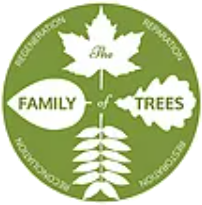As a mother, I am often questioned about the choices I make in raising my children. Every time I leave the house with my 5 month old I am bombarded with unsolicited advice about all aspects of his well-being ranging from his attire to his diet. Nothing has brought on more comments, though, than my decision to use cloth diapers.
It is an undeniable FACT that disposable diapers and baby wipes are one of the highest expenses in the monthly budget of families with children in diapers. On average a child will go through 8-10 diapers a day until the age of 30 months. That’s about 8000 diapers, and a cost of about $2500! A great set of cloth diapers with 20 top-of-the-line pocket diapers with inserts will cost you an average of $350 and can be used on future children or resold. There are many systems that can increase your cost savings even more. Prefold diapers with reusable waterproof or wool covers are an excellent way to save money.
In using disposable diapers, you are generating a lot of trash, but do we think about how much damage one child’s worth of garbage does on the environment? In a house with a child in diapers, disposables make up 50% of household waste. Did you know that the instructions on a disposable diaper package advise that all fecal matter should be deposited in the toilet before discarding, yet less than one half of one percent of all waste from single-use diapers goes into the sewage system. That only emphasizes the fact that disposable diapers are the third largest single consumer item in landfills. And if you needed a reason for our high gas prices these days, disposable diapers use twenty times more raw materials, like crude oil and wood pulp, than reusable diapers.
We are all concerned with the health of our kids. In 1955, before modern disposable diapers were sold and consumed, it was estimated that 7% of babies and toddlers had diaper rash. In 1991, long after plastic disposable diapers dominated the market, the number jumped to 78%. Disposable diapers contain Sodium Polyacrylate, a type of super absorbent polymer (SAP), which becomes a gel-like substance when wet. This chemical can cause skin irritations and severe allergic reactions including vomiting, staph infections, and fever. If your child has suffered with rashes that cannot be explained, I urge you to try cloth diapering as an option. A baby’s skin can be affected by many of the other chemicals used in the disposable diaper making process.
What convinced my husband and I to use cloth diapers was actually seeing them. Cloth diapers are NOTHING like our mothers and grandmothers used. They come in unique fabrics, cute designs, and every color of the rainbow. They are fashionable, and can be custom painted, hand-dyed or embroidered! The insides can be made of soft fleece or organic velour that is so luxurious. Today’s cloth diapers let you and your baby show off your personalities, as well their well covered little booty’s! With cloth diapers, your baby will be the envy of play dates, daycares, and nurseries.
Reprinted from the August 2006 issue of Healthy Beginnings
Diapers in the waste stream by Carl Lehrburger 1989.
Whitewash by Liz Armstrong and Adrienne Scott, Harpercollins 1993.
Think Cloth
612-220-1146
www.thinkcloth.com
Peapods
251 Snelling Ave S
St. Paul, MN
651-695-5559







